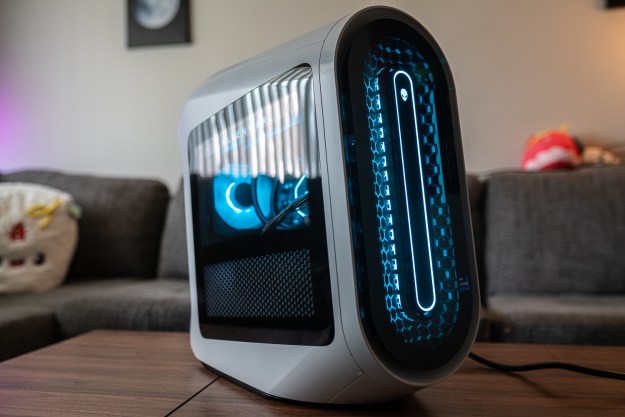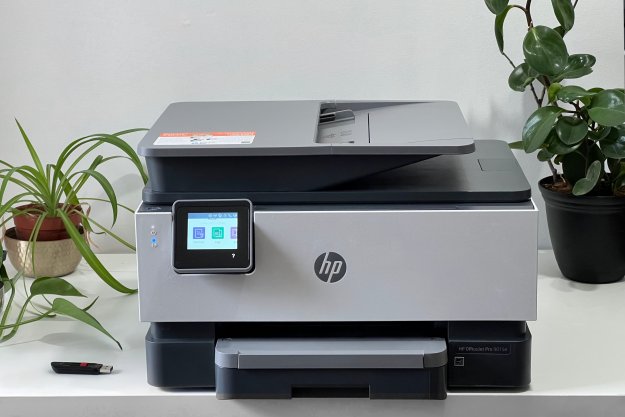It’s not often you see a product that is both cool, and designed to embarrass one of the technology suppliers that created it. One particular case makes both an interesting product and an interesting back story. Not only did one of the major parts suppliers abstain from its announcement, the company did its level best to try to stop the product altogether.
I’m talking about the new Acer Aspire Revo, a revolutionary little desktop PC that is probably all most of us need in a PC, made possible by the amazing Intel Atom, and just-as-amazing Nvidia Ion graphics parts. But this marriage did not meet with Intel’s approval (the companies are feuding at the moment), and even though the result is just as amazing, Intel is not pleased. This kind of reads like the tech version of Romeo and Juliette. I’m sure Shakespeare would be proud of the drama.

One of the reasons I think consumers aren’t buying many desktop PCs at the moment is that they have conflicting needs. They want it to be inexpensive, they want it to be energy efficient, they want it to perform, and they want it to be something they can be proud of. Most buyers aren’t high-end gamers, though they need baseline performance good enough for things like photo and video editing, and multi-player games if they so choose. Desktop PC sales have largely cratered, because generally, at the sub-$400 price point where people want to buy; most of the products make too many tradeoffs.
Much as we saw with netbooks, it appeared the market was looking for something below $400 that still appeared to be high quality, did the tasks consumers needed to do, required little electricity, and looked good enough to show off. Until today, no one built such an offering for the desktop.

One of the primary reasons that such a product didn’t exist is that the ideal processor was an Atom, but the matched Intel integrated graphics were, by design, very limited. Intel envisioned a limited, browser-focused PC, so that it could protect its more expensive Core 2 lines. The company wanted a clear delineation between the two, so that the market would not move to this new, low-cost and efficient platform, forcing a premature collapse of this market into this value space.
However, because desktop sales were dropping like a rock, this strategy didn’t seem to be working. Buyers weren’t seeing anything they were excited about, and simply weren’t buying. The Core 2 offerings didn’t meet what the buyers seemed to be looking for, and the Atom bundles Intel was offering didn’t either. They both bracketed the needs, but neither met them. Intel appeared to hate the idea of anyone building the perfect Atom solution.
Enter Ion
The Nvidia Ion allowed systems to reach the right price point, and still have the rich look and feel the market was looking for, without sacrificing the performance the market required. It seemed, on paper, and then in testing, to be the ideal part to balance the Atom, and create desktop systems that were low-priced, high-quality, and green.
The problem was that an OEM had to be willing to aggravate Intel and pay a premium to break the Intel bundle to offer an Ion solution. That vendor, initially, has turned out to be Acer.

The Acer Aspire Revo is a small, sexy, green, inexpensive, and capable PC. Expected to be priced under $400, it has a full-port out, including HDMI and VGA video ports, capability that is adequate for HD movies, video and photo editing, and most games (it is by no stretch a gaming machine, but is fine for games like World of Warcraft).
Specifications based on configuration include up to 4GB RAM, a hard drive up to 250GB, VGA/HDMI, eSata connectors, six USB ports, a four-in-one card reader, and a choice of Vista Home Basic or Premium.
The system runs dead quiet, pulls a fraction of the electricity of a typical desktop PC, and will even mount on the back of an Acer Monitor to create one of the least expensive all-in-one combinations in the market.
For instance, one of Acer’s 23-inch monitors, which can be found for around $200 on sale, can be married to this box to create a kicking sub-$600, all-in-one-like, large-screen PC. Unlike a real all-in-one PC, this one could even be upgraded to new technology by replacing the PC component without replacing the screen. Or, with touch coming, the monitor side could be upgraded without needing to replace the PC component.
Wrapping Up
Given where buyers are focused right now in terms of price and capabilities, the Acer Aspire Revo should be one of the most successful desktop products released this year. If it is, then Ion-based netbooks coming later this year could succeed equally, suggesting that this may be the new killer combination for small, light, portable PCs. Given that both provide performance in line with mainstream products, I wonder how long it will be before we consider them as such. Maybe you don’t have to sacrifice to be cool, green, and frugal.
Editors' Recommendations
- AMD vs. Nvidia vs. Intel: which PC giant won CES 2023?
- Acer’s Predator gaming laptops get update to latest Intel, Nvidia silicon


